 Boys and Girls Club of Toledo
Boys and Girls Club of Toledo
Exhibit Gallery


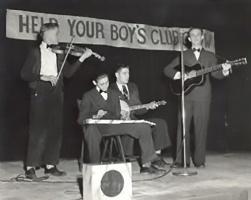






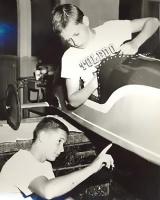







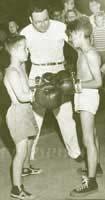



 Saluting the American flag at Camp
Saluting the American flag at Camp
The roots of the Boys and Girls Clubs of Toledo can be traced back more than a century to the Toledo Newsboys Association begun by John Gunckel in 1892. Although the name of the organization has changed on more than one occasion, the mission has remained the same.
Boys and Girls Clubs of America
The roots of the Boys and Girls Clubs of America date to the founding of the first club in Hartford, CT. The founders of this club believed that the boys of Hartford needed an alternative to roaming the city’s streets and looking for potential trouble.
By 1906, 53 other clubs were formed across New England. These clubs would become the Federated Boys Clubs of Boston in 1906. The organization would eventually take the moniker of the Boys Clubs of America in 1931. In honor of its fiftieth anniversary, Congress bestowed a Congressional charter upon the Boys Clubs of America in 1956, a rare honor that has been given to only a chosen few non-profit organizations.
Early photos of the Boys Clubs of America
 Boy's Club Camp
Boy's Club Camp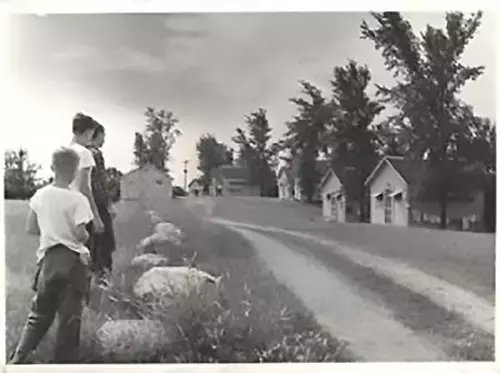 Cabins at the Camp
Cabins at the Camp Canoeing on the lake at camp
Canoeing on the lake at camp Archery lessons
Archery lessons
 Boy's Club Band benefit
Boy's Club Band benefit Baseball Games
Baseball Games Camp library activity
Camp library activity Learning about cars
Learning about cars
In 1990, the Boys Club expanded its operations and included girls for the first time. Currently, there are more than 4,000 Boys and Girls Clubs located on three continents. The organization's current headquarters is located in Atlanta, Ga. Regional offices can be found in Chicago, Los Angeles, Dallas, and New York.
After several years of affiliation with the Boys Clubs of America, the Toledo Newsboys Association officially changed its name to become the Boys Club of Toledo in 1942. The club began providing services for girls in 1982, which were fully integrated into the larger program in 1985. That same year, The Boys Club of Toledo underwent another name change, becoming the Boys & Girls Clubs of Toledo.
![]() The Boys' club of Toledo and the Toledo Newsboys' Association, 1953
The Boys' club of Toledo and the Toledo Newsboys' Association, 1953
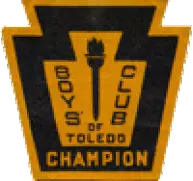 Boys' Club of Toledo champion patch
Boys' Club of Toledo champion patch Boys and Girls Club of Toledo after admitting girls in the 1990s
Boys and Girls Club of Toledo after admitting girls in the 1990s
John Gunckel (1846-1915)
John Elstner Gunckel, the founder of the Toledo Newsboys Association, was born on August 14, 1846 in Germantown, Ohio. Gunckel enrolled at Oberlin College in Oberlin Ohio, completing three years of schooling before moving to Toledo in 1875 to begin his career in the real estate industry.
Gunckel began his professional career in the erratic Toledo real estate market, later taking a position as a ticket agent for the Lakeshore and Michigan Southern Railroad. He would continue with the railroad for twenty more years, being promoted to a traveling passenger agent.
Around this time period, Gunckel began to notice the "rowdy" behavior of Toledo newsboys, the young boys who sold newspapers on the city’s streets. Gunckel, the eternal optimist, knew that these boys could become productive citizens if only given some attention. He began taking the newsboys out to dinner, extolling upon them the virtues of clean and proper living. Gunckel went as far as inviting 102 of these "ruffians" to his own home for Christmas dinner in 1892.
Soon after that dinner, Gunckel and several local businessmen created the Toledo Newsboys Association, a crew whose core mission was to help these unguided boys become respectable citizens. The Newsboys Association had a few basic guidelines, which included: no swearing; stealing; gambling; smoking; or drinking; all habits popular amongst newsboys at the time. If caught violating these rules, the punishment was forfeiture of their membership card in the organization. By the end of the Newsboys Association’s first year, more than 250 boys had joined and they had even begun a Newsboys musical band.
 Early symbol of the Newsboys' Association
Early symbol of the Newsboys' Association Newsboys musical band
Newsboys musical band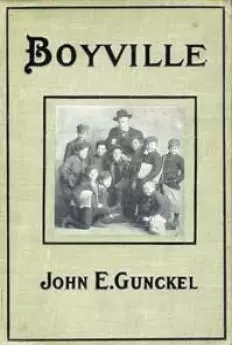 Cover of Boyville by John E. Gunckel
Cover of Boyville by John E. Gunckel Boyville Industries Paymester's Office
Boyville Industries Paymester's Office
At the St. Louis World’s Fair of 1904, Gunckel, with the endorsement of the National Association of Managers of Newspaper Circulation, announced the formation of the National Newsboys Association and announced himself president for life of both the Toledo and the national organizations. The association quickly rose to national prominence, with the Newsboys Band playing for President Theodore Roosevelt.
1905 brought the publishing of Boyville, Gunckel's book promoting the Newsboys Association. The book was a rousing success and even brought offers of national speaking engagements for notable figures such as William Jennings Bryan and various state teachers groups. All of the book’s proceeds went to Gunckel's beloved Newsboys Association.
In 1908, Gunckel began to raise funds to construct a home for the Toledo Newsboys Association. His efforts raised more than $100,000 and the first home of the Newsboys Association on Superior St. in Toledo was dedicated and opened in 1911.
 Charter members of the Toledo Newsboys Association
Charter members of the Toledo Newsboys Association The first home of the Toledo Newsboys Association on Superior St.
The first home of the Toledo Newsboys Association on Superior St.
John Gunckel died on August 16, 1915, exactly 11 years after the National Newsboys Association was created. As a tribute to Gunckel, the newsboys of Toledo built a 30' x 26' stone pyramid in his honor, returning to it every year for a memorial service and placing of a lotus flower (which Gunckel brought to Toledo from his travels abroad). Every year, Toledoans mark the date of his passing with a ceremony at the pyramid in Woodlawn Cemetery. John Gunckel's widow, Alice B. Gunckel, would continue to serve the Newsboys Association for the next 16 years, until her passing in January of 1931.


